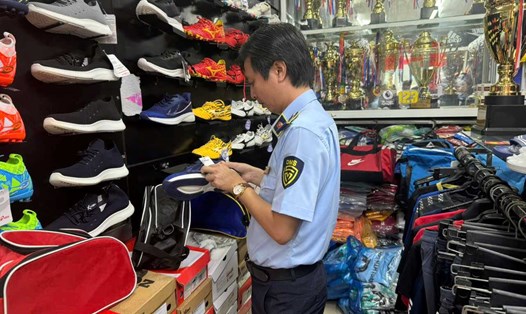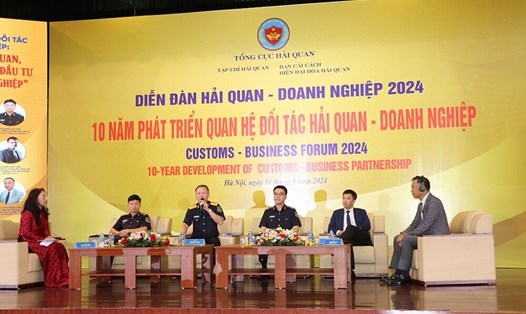Second-hand goods business is booming.
According to an article in the Financial Times, some popular fashion brands Shein, Zara, H&M or famous toy manufacturer Lego are racing to join the booming second-hand business. In the same trend, the number of startups in this field such as Vinted, Depop, ThredUp and Vestiaire Collective... is also increasing. All are trying to find revenue from used items.
Even famous stars, singers and actors like Bella Hadid, Rihanna and Sarah Jessica Parker also support and practice a frugal lifestyle.
“Secondhand is very popular. But the costs of doing this kind of business are huge. It’s not easy,” said journalist Adam Minter, author of two books, “Junkyard Planet” and “Secondhand,” which explore the multi-billion dollar recycling industry.
The world's largest furniture retailer Ikea has launched a platform called Ikea Preowned, allowing customers to buy and resell their used Ikea furniture. The Ikea Preowned website is currently being tested in Madrid (Spain) and Oslo (Norway), before deciding to deploy it globally later this year.
Mr. Jesper Brodin, CEO of Ingka - the unit that operates Ikea stores - revealed that the group believes that the market share for the second-hand furniture sector is even higher than that of new products.
It's not hard to see why big brands are eyeing the used goods business, as sales of these items grow faster than new items, even though the initial starting point is often much lower.
The global secondhand clothing market has grown from $141 billion in 2021 to $230 billion in 2024 and is expected to reach $350 billion by 2028, growing three times faster than new clothing, according to estimates by US-based secondhand marketplace ThredUp. Meanwhile, consulting firm Bain & Company estimates that sales of secondhand luxury goods have increased by 125% from 2017 to 2023, compared with a 43% increase for new goods.
Reuse to reduce the burden on the environment
Secondhand goods are increasingly popular among younger consumers. According to a survey by market research firm Euromonitor, more than 40% of Generation Z (those born between 1997 and 2012) and millennials (those born between 1981 and 1995) buy a second-hand product at least once every few months, compared with just over 20% of baby boomers (those born between 1946 and 1964).
Experts explain that used clothes were not popular in the past. But for the younger generation, new clothes are not the top concern, they pay more attention to the environment and the value of use. This is a great investment opportunity.
Buying and selling second-hand goods is not a new business. Second-hand or charity shops such as Goodwill and the Salvation Army in the US or Oxfam in the UK have been selling used clothes, books and other items for decades.
“People in the West think of the secondhand economy as a new thing. But it has always existed. As long as there is new stuff, there will be used stuff,” says journalist Adam Minter.
Today's secondhand shops have grown to a level of professionalism, sorting what they can sell and what can be exported to emerging markets as clothing or recycled into other products like pillow stuffing or insulation.
Used products are not always easy to resell, in fact many poor quality products require a lot of work to be processed. Many big brands have tried to solve this problem by creating a market for buying and selling between individual consumers, with companies acting as intermediaries.
For example, sellers on the Ikea Preowned furniture website only need to enter the name of the item they want to sell, describe its condition, and upload actual photos. Artificial intelligence (AI) technology will support product recognition, adding original images and detailed specifications. Buyers communicate with the seller and check the quality themselves upon receiving the product.
“It’s a great way to stay connected with customers,” an Ikea representative said, adding that Ikea’s used furniture platform is currently free to use and that if it charges a fee in the future, it will be “a very modest fee.”
This shows that it is very difficult for such sales platforms to make money. Also implementing a zero-fee policy for sellers, Vinted became the first secondhand fashion platform to turn a profit in early 2024, when it made a net profit of €18 million on sales of €596 million.
“Pre-owned is still a drop in the ocean. We see the challenge of changing people’s mindsets about prioritizing pre-owned over new,” said Thomas Plantenga, CEO of Vinted.
Fashion brands like Zara, Shein and COS all have their own second-hand marketplaces.
There are also companies that take matters into their own hands. Lego is a good example. Most of their old Lego products are passed on to friends and family or given away as gifts, but the famous toy maker still wants to make sure that the rest is reused or recycled instead of thrown away.
Lego’s former head of sustainability, Tim Brooks, said in a 2023 interview that the company has spent years researching how to deal with old toys. Lego is doing that by testing its Replay service in the US, Canada and the UK, where people donate used Legos that the company can then send to charities or schools. So far, it has collected nearly 500 tonnes of Legos. A buyback program in Germany rewards customers with an 8-euro gift card for every kilogram of Legos or miniatures sent in.
“This is a long way from a company that has only been used to manufacturing, a big change in mindset,” said Mr. Brooks.
It is easy to see that the trend of preferring second-hand goods is still flourishing and shows no signs of stopping in the context of companies looking for ways to cut emissions and move towards a circular business model so that more and more old products are reused or recycled.










